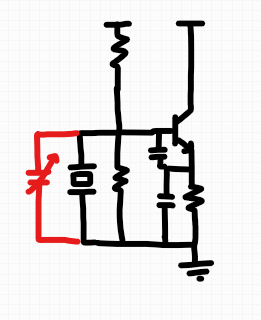I have built this simple Crystal Oscillator circuit operating at 30Mhz and it's working fine. Please ignore the values of the equivalent circuit of the Crystal i.e ESR, EPC, ESC, ESI. I am using this circuit with an antenna at node 4 (emitter) to produce em waves which I hear as silence when I tune to 90MHz (3rd Harmonic of 30MHz)
What simple design should I use to modulate the frequency of the Oscillations? For example using a varactor diode. How to boost the third harmonic of the oscillations? The various circuits that I saw on the internet to do so use Inductors. Is it possible without an Inductor and a variable capacitor? I have also read this. Since inductors in 0.1uH (to get the 30Mhz resonant frequency) or less range are difficult to get if I build one on my own will it work because it's not possible to get the exact value of the inductor, So will it work even if there is a slight deviation in the inductor? Please suggest any other modifications to improve the circuit.




